|
|
|||
|
(Back to Preceding Week; on to Next Week) |
|
SIGNS OF SPRING 2007
The Sun passed over the equator on 21 March 2007, so this year the vernal equinox came a calendar day later than usual; in recent years spring has been arriving on the 20th. As is our tradition on the first day of spring, we are especially alert to phenology and try to capture in photos and words a synopsis of seasonal activity at Hilton Pond Center. We do this for our own and others' enjoyment but especially as a reminder to shivering friends in the still-frozen northland that spring is on its way to them . . . sooner or, more likely, later. Below you'll find an assortment of this year's "Signs of Spring" around Hilton Pond, where day-time temps have been in the 70s.
All text & photos © Hilton Pond Center One of our earliest spring wildflowers at Hilton Pond is Trumpet Honeysuckle, Lonicera sempervirens (above). This native vine--unlike its Japanese cousin, L. japonica--does not twine and constrict shrubs or trees, and its long tubular red flowers are obviously adapted for pollination by Ruby-throated Hummingbirds. The Center's only Trumpet Honeysuckle grows in a snag beside a water garden just outside the kitchen window of our old farmhouse--right where we can keep a close eye on it as we await the arrival of our first spring hummers. (NOTE: our earliest ever ruby-throat appeared on 27 March 1991, so this week is none too early for folks in the Carolinas to have a feeder up, just in case--especially since ruby-throats already have been seen this year as far north as Grove, Oklahoma. Who knows what effect global warming is going to have on arrival dates for future spring migrants?)
Last autumn a Sweetgum on the edge of Hilton Pond started to lean at an unnatural angle, so we cut it off at ground level lest it topple and pull up a mound of earth that might compromise the dam. We carefully planned our cut so the tree would fall in just the right position where we could observe it through binoculars from our office window. We hoped this new gently inclined plane would become a place where turtles could pull themselves out of the water and loll around in the sun. Our strategy worked, and on bright, unseasonably warm days even in January and February a turtle or two took advantage of the fallen tree. With the arrival of warmer weather this week we spotted six Yellowbelly Sliders, Trachemys s. scripta, sharing the log (above). These particular individuals are probably the biggest of their kind in Hilton Pond, each having a shell at least 12" in length.
During winter months when turtles weren't all that active, the log in the water served daily as a perch for a Great Blue Heron and--when the big wader wasn't hogging it--a Wood Duck or two. The local population of at least two pairs of woodies has become quite active, and the females are laying eggs in nest boxes we've erected around Hilton Pond's perimeter. One day this week a drake (above) was especially attentive to his mate. When he displayed and she assumed a submissive posture--flattening herself out on the water and holding her bill horizontally just beneath the surface--the two copulated. Shortly thereafter the hen entered a nest box and stayed for a few hours, possibly waiting for a recently fertilized egg to make its way down her oviduct.
Several traps we use to catch birds at Hilton Pond Center are operated by pullstrings that extend from the trapdoor, through the wall of the old farmhouse, and into our office. Each string is anchored by a wooden ring we pull when we want to capture a bird or three attrated to sunflower seeds in the trap. We were sitting at our computer desk burning midnight oil this week when one of the trigger rings suddenly moved and rattled against the others--a sure sign something big had entered the trap. We could see nothing when we peered into the darkness, so we grabbed a flashlight and our camera and went out to investigate. Sure enough, a half-grown seed-robbing Raccoon, Procyon lotor, was inside the trap. Rather than escape through the still-open door, the 'coon crouched down and peered over the seed tray with its beady little eyes. It seems unlikely this Raccoon, whose size indicates it was born last summer, will breed during the coming spring season; it probably wait until it is two years old. We've often wondered about the function of a Raccoon's black mask. Based on the behavior depicted in the photo above, we'd say it helps conceal the 'coon's dark eyes on an otherwise light-colored face.
And speaking of mammals, one of the few disadvantages of living in an old rural farmhouse is that miscellaneous small animals creep in through nooks and crannies--especially when one stores sunflower seeds indoors. Each winter we share our abode with a small army of White-footed Mice, Peromyscus leucopus, that scurry about in search of seeds during their waking hours--those unfortunately coinciding with the very times we human inhabitants are trying to sleep. One night this week we forgot to put the lid on a seven-gallon bucket in which we keep oil seeds, and the next morning we heard scratching noises coming from the container. There also were occasional thumps, for the bucket was nearly empty and the furry little critter within--one of those White-footed Mice--was jumping as high as it could, not quite able to reach the rim. Donning a leather glove, we gently grabbed the big-eared rodent and snapped a few photos (above) before releasing it in the woods some distance from the farmhouse. May this mouse find a happy meal of wild seeds and berries in a habitat more natural than a bucket in a house. (NOTE: Despite our on-going efforts to trap and release them far afield, White-footed Mice have their way at the farmhouse. Although females can breed at any time of year, they seem much more active in early spring.)
We were quite surprised late in the day on 20 March to find a newly emerged Luna Moth, Actias luna (above) drying its wings on an elm sapling near the Hilton Pond dam. We would expect this species to expupate much later in spring; it seems quite risky for it to appear mid-March when there's still real possibility of late frost. In addition, since green-up hasn't occurred to any significant extent, there aren't many camouflaged places for a pale green moth to hide from potential predators; maybe those big false eyespots on the moth's wings will frighten away hungry birds. Whatever happens, this moth doesn't have much time. Luna Moths have no mouths and live only a week after emerging, which means they need to find a mate in a hurry--no easy task this early in the season.
Although he had to depart on 20 March and didn't actually get to see spring arrive at Hilton Pond Center, we were still delighted to host life-long friend Jim Shuman for a few days this week. Dr. Shuman, education chair at St. Lawrence University in extreme Upstate New York, was in South Carolina to avoid frostbite and meet with several officers of the Center's board of trustees. Jim has served as board president since the Center was incorporated and was a co-principal investigator on our recently expired 42-month grant from the National Science Foundation in support of Operation RubyThroat: The Hummingbird Project. Jim departed South Carolina's 70-degree weather and got off the plane in New York to subfreezing temperatures. He took with him memories of helping catch and release a Chipping Sparrow (above)--our 48,500th bird banded at Hilton Pond since 1982--plus the knowledge this photo essay about "Signs of Spring 2007" at Hilton Pond is available on-line to remind him what nature MIGHT be like in six weeks at his beautiful but ice-bound North Country home. Happy Spring!
All text & photos © Hilton Pond Center POSTSCRIPT: We were pleased this week to get excellent recognition for Hilton Pond Center for Piedmont Natural History from two different publications. One was the Minneapolis Star-Tribune, We also were featured in a short article in the April issue of Outdoor Photographer, a magazine with international distribution. (For some reason, the article isn't included in the on-line edition.) The story described how we use iViewMedia Pro (recently re-named Microsoft Expression Media) to import and catalog our nature photographs and sounds.
Comments or questions about this week's installment?
Thanks to the following fine folks for recent gifts in support of Hilton Pond Center for Piedmont Natural History and/or Operation RubyThroat: The Hummingbird Project. Your tax-deductible contributions allow us to continue writing, photographing, and sharing "This Week at Hilton Pond."
"This Week at Hilton Pond" is written & photographed You may wish to consult our Index of all nature topics covered since February 2000. You can also use our on-line Hilton Pond Search Engine at the bottom of this page. For a free, non-fattening, on-line subscription to |

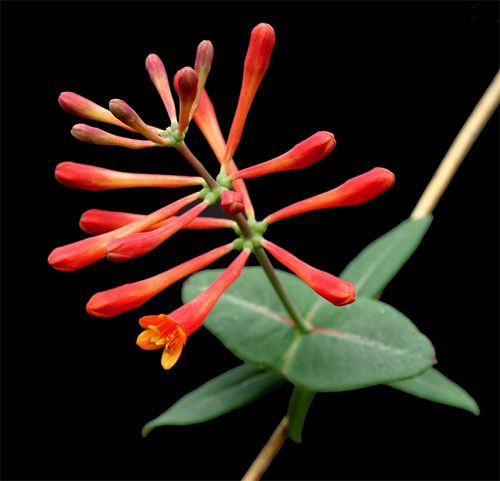

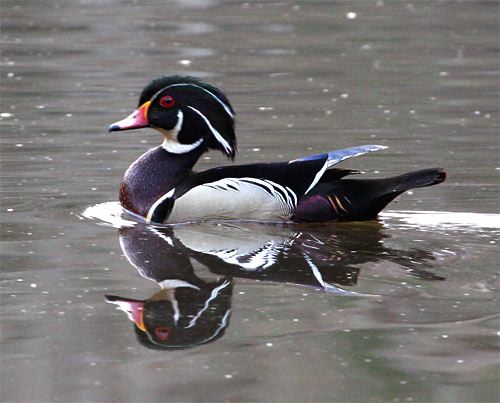
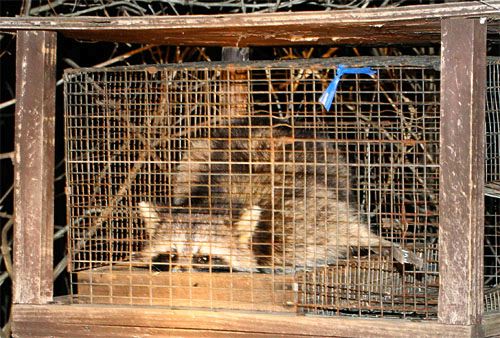
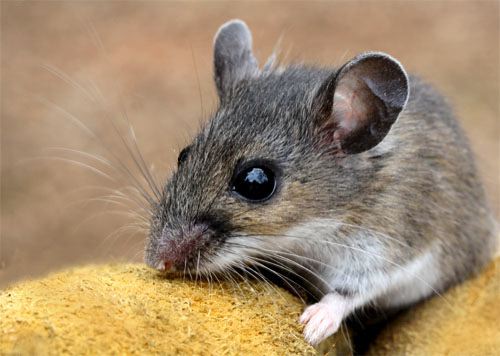
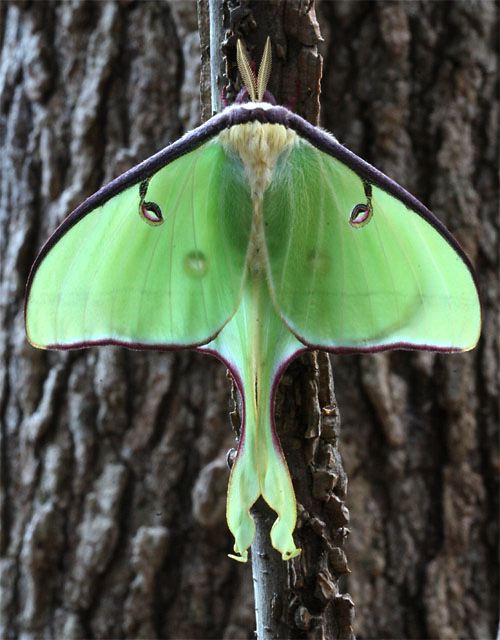
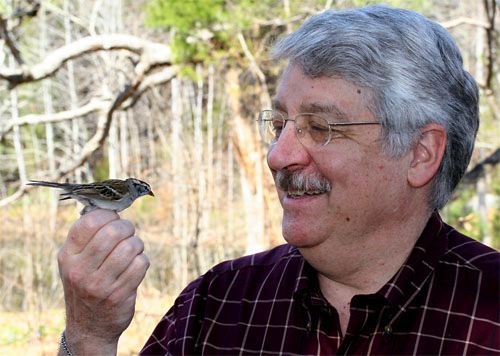
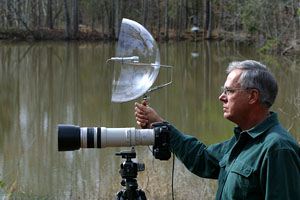 in which Randy Salas publishes a daily "WebSearch" column telling readers where they can go on the Internet to find information about particular topics. His
in which Randy Salas publishes a daily "WebSearch" column telling readers where they can go on the Internet to find information about particular topics. His  Included in both newspaper and magazine articles was a photo (above right) of our zoom telephoto camera set-up and our not-too-expensive quick-and-dirty home-made sound-recording equipment, consisting of a hemispheric plastic reflector (AKA Droll Yankees squirrel guard), the handle from a paint roller, an 80 GB color iPod with a Belkin TuneTalk interface, and a Sony DS70P stereo microphone. This set-up works well but would work better with a true (and more expensive) parabolic reflector. Also featured was one of our mug shots of a Blue Jay (above left), a species we came to know quite well during grad school days in Minnesota.
Included in both newspaper and magazine articles was a photo (above right) of our zoom telephoto camera set-up and our not-too-expensive quick-and-dirty home-made sound-recording equipment, consisting of a hemispheric plastic reflector (AKA Droll Yankees squirrel guard), the handle from a paint roller, an 80 GB color iPod with a Belkin TuneTalk interface, and a Sony DS70P stereo microphone. This set-up works well but would work better with a true (and more expensive) parabolic reflector. Also featured was one of our mug shots of a Blue Jay (above left), a species we came to know quite well during grad school days in Minnesota. 
